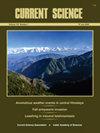用于打包机的机械化尿素喷洒系统,提高秸秆的营养品质:防止秸秆燃烧的一步
IF 1
4区 综合性期刊
Q3 MULTIDISCIPLINARY SCIENCES
引用次数: 0
摘要
大部分未使用的作物残茬在田间焚烧,主要是为了清理联合收获后剩下的秸秆和残茬。研究报告了焚烧作物残茬对土壤有机碳和肥力的若干不良影响,包括长期生产力下降、环境污染和人类健康。它还产生导致全球变暖的温室气体。在印度,水稻和小麦会产生大量的残渣。缺乏劳动力、清除田间残茬的高成本以及收获作物时越来越多地使用联合收割机是在田间焚烧作物残茬的主要原因。稻秆硅含量高,不宜作为动物饲料;麦秸茎硬,未切碎时难以咀嚼,不宜作为动物饲料。使用尿素等补品和喷洒尿素的饲用秸秆可提高其营养价值和摄取量。我们开发了一种机械化打包机,配有尿素喷洒系统,用于在打捆过程中对作物秸秆(稻谷或麦秆)喷洒尿素,以提高其营养价值。在一个收获的小麦残余田联合试验中对该系统进行了评价,并进行了营养分析。尿素处理后,小麦秸秆粗蛋白质含量由3.68%提高到10.10%。与未经处理的秸秆相比,代谢能也提高了3%。因此,尿素处理包在奶牛养殖中具有潜在的用途。本文章由计算机程序翻译,如有差异,请以英文原文为准。
Mechanized urea spraying system for balers to enhance the nutritional quality of straw: a step to prevent straw burning
A large portion of unused crop residues is burnt in the fields primarily to clear the left-over straw and stubbles after the combine harvest. Studies have reported several ill effects of crop-residue burning on soil organic carbon and fertility, including reduction in productivity in the long term, environmental pollution and human health. It also produces greenhouse gases causing global warming. Rice and wheat produce large amounts of residue in India. Non-availability of labour, the high cost of residue removal from the field and the increasing use of combines in harvesting the crops are the main reasons for burning crop residues in the fields. Rice straw is unsuitable animal feed due to its high silica content and wheat straw for due to its hard stem and diffi-culty chewing in unchopped form. Using supplements like urea and is feeding straw sprayed with urea improves its nutritive value and intake. We have developed a mechanized baler equipped with a urea spraying system for spraying urea during baling operations on crop residues (paddy or wheat straw) to enhance their nutritional value. The developed system was evaluated in combine a harvested wheat residue field and nutritional analysis was performed. The crude protein in untreated wheat straw increased from 3.68% to 10.10% after urea treatment. The metabolizable energy was also found to improve by 3% compared to untreated straw. Thus, urea-treated bales have potential use in dairy farming.
求助全文
通过发布文献求助,成功后即可免费获取论文全文。
去求助
来源期刊

Current Science
综合性期刊-综合性期刊
CiteScore
1.50
自引率
10.00%
发文量
97
审稿时长
3 months
期刊介绍:
Current Science, published every fortnight by the Association, in collaboration with the Indian Academy of Sciences, is the leading interdisciplinary science journal from India. It was started in 1932 by the then stalwarts of Indian science such as CV Raman, Birbal Sahni, Meghnad Saha, Martin Foster and S.S. Bhatnagar. In 2011, the journal completed one hundred volumes. The journal is intended as a medium for communication and discussion of important issues that concern science and scientific activities. Besides full length research articles and shorter research communications, the journal publishes review articles, scientific correspondence and commentaries, news and views, comments on recently published research papers, opinions on scientific activity, articles on universities, Indian laboratories and institutions, interviews with scientists, personal information, book reviews, etc. It is also a forum to discuss issues and problems faced by science and scientists and an effective medium of interaction among scientists in the country and abroad. Current Science is read by a large community of scientists and the circulation has been continuously going up.
Current Science publishes special sections on diverse and topical themes of interest and this has served as a platform for the scientific fraternity to get their work acknowledged and highlighted. Some of the special sections that have been well received in the recent past include remote sensing, waves and symmetry, seismology in India, nanomaterials, AIDS, Alzheimer''s disease, molecular biology of ageing, cancer, cardiovascular diseases, Indian monsoon, water, transport, and mountain weather forecasting in India, to name a few. Contributions to these special issues ‘which receive widespread attention’ are from leading scientists in India and abroad.
 求助内容:
求助内容: 应助结果提醒方式:
应助结果提醒方式:


